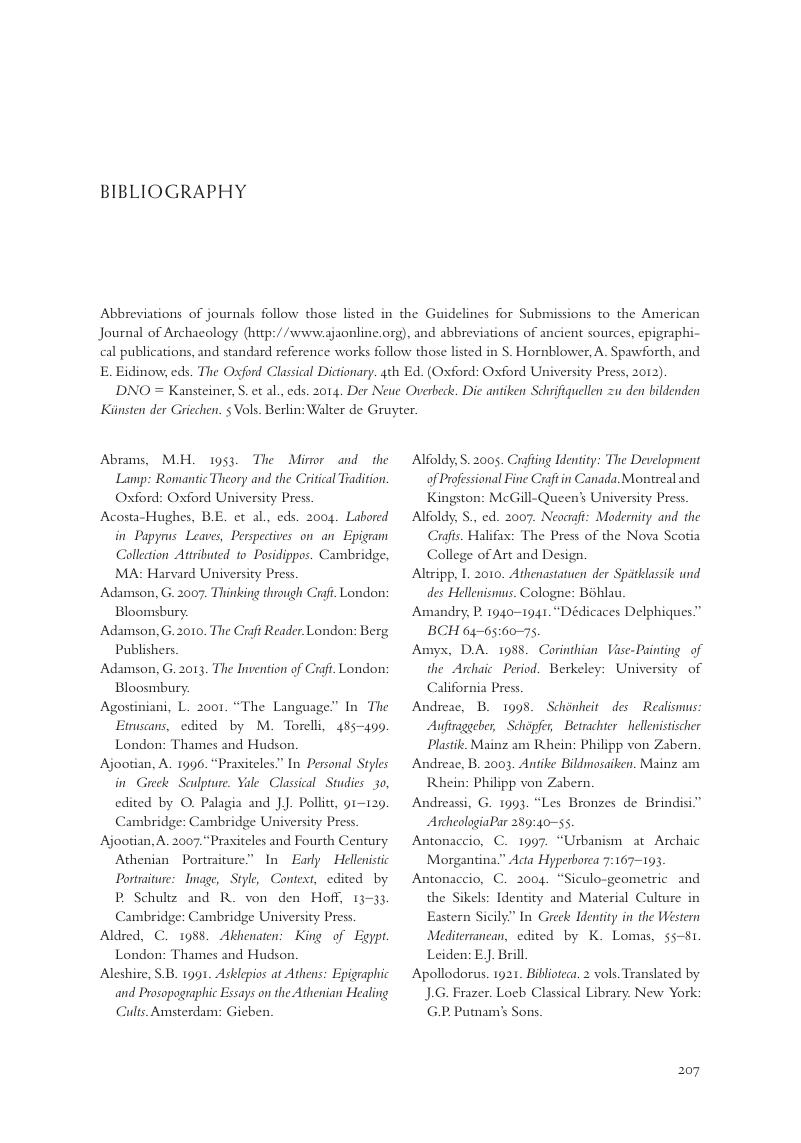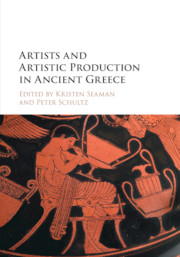Book contents
- Artists and Artistic Production in Ancient Greece
- Artists and Artistic Production in Ancient Greece
- Copyright page
- Contents
- Illustrations
- Contributors
- Preface
- 1 Introduction: Greek Artists, Yesterday and Today
- 2 The Social and Educational Background of Elite Greek Artists
- 3 Portrait of an Artist: Euthymides, Son of Pollias
- 4 Kritios and Nesiotes: Two Revolutionaries in Context
- 5 Craft Identity: Mosaics in the Hellenistic East
- 6 Artistic Choice and Constraint on Coins
- 7 Constructing Architects: The So-Called “Theseum Architect”
- 8 Euphranor
- 9 Politics and Personality? The Case of Kephisodotos the Younger
- 10 Artists’ Signatures on Archaic Greek Vases from Athens
- 11 Response: Reflections on Identity, Personality, and Originality
- Bibliography
- Index
- References
Bibliography
Published online by Cambridge University Press: 26 June 2017
- Artists and Artistic Production in Ancient Greece
- Artists and Artistic Production in Ancient Greece
- Copyright page
- Contents
- Illustrations
- Contributors
- Preface
- 1 Introduction: Greek Artists, Yesterday and Today
- 2 The Social and Educational Background of Elite Greek Artists
- 3 Portrait of an Artist: Euthymides, Son of Pollias
- 4 Kritios and Nesiotes: Two Revolutionaries in Context
- 5 Craft Identity: Mosaics in the Hellenistic East
- 6 Artistic Choice and Constraint on Coins
- 7 Constructing Architects: The So-Called “Theseum Architect”
- 8 Euphranor
- 9 Politics and Personality? The Case of Kephisodotos the Younger
- 10 Artists’ Signatures on Archaic Greek Vases from Athens
- 11 Response: Reflections on Identity, Personality, and Originality
- Bibliography
- Index
- References
Summary

- Type
- Chapter
- Information
- Artists and Artistic Production in Ancient Greece , pp. 207 - 230Publisher: Cambridge University PressPrint publication year: 2017



